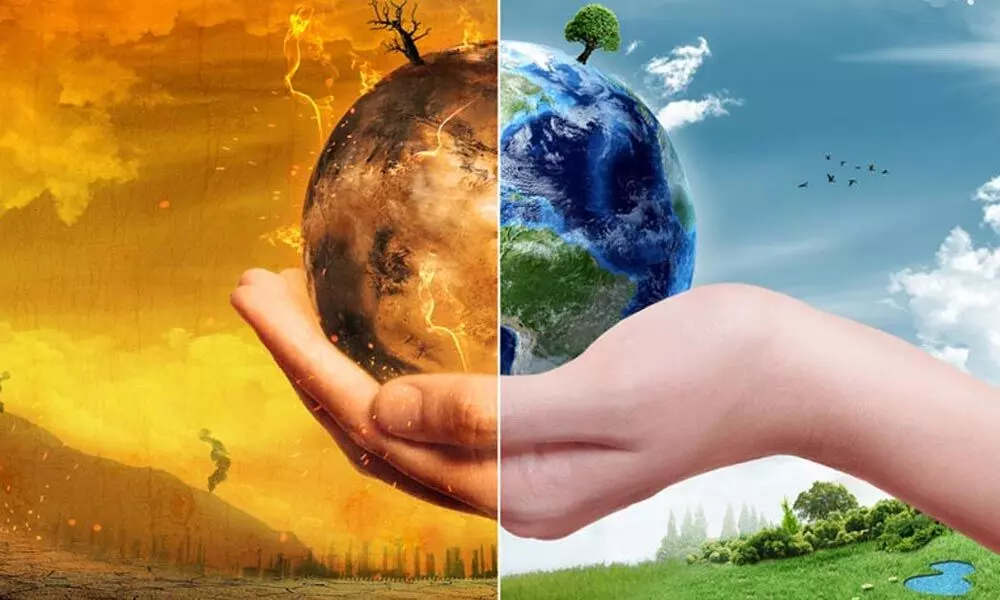India needs local solutions to fight climate change
Climate change disruptions are often transmitted to the real economy: farms, transportation of goods, built infrastructure, availability of drinking water and fatally hot summer temperatures.
image for illustrative purpose

Climate change disruptions are often transmitted to the real economy: farms, transportation of goods, built infrastructure, availability of drinking water and fatally hot summer temperatures. These are all real challenges. And when it comes to top companies, the urgency to combat climate change, safeguard natural resources, invest in their respective communities, and govern themselves with the highest ethical standards has only increased, over the years. An increasing number of large global companies are committing to new goals in the areas of climate change mitigation, circular economy and sustainable materials. These companies are striving not only to improve their own operations but also to work with their suppliers and local communities in order to realize their vision to provide a smarter, more sustainable future for all.
Consider what many companies are doing:
♦ Engaging suppliers and key partners in sustainability practices, including the reduction of transport related carbon emissions in the delivery of products
♦ Significantly increasing local manufacturing
♦ Reducing emissions from purchased or acquired electricity, steam, heat and cooling
♦ Enable recycling and reuse of end-of-life products and post-consumer recycled content plastics in their products
It is pertinent to mention here that the rising average temperature of the Earth is primarily blamed by scientists on man-made emissions of greenhouse gases that trap radiation in the atmosphere which would otherwise escape into space. Among the most significant greenhouse gases is carbon dioxide (CO2), concentrations of which have increased by almost 50 per cent since the industrial revolution began. Innovations being used to reduce CO2 emissions include carbon capture, utilisation, and storage technologies - with the Net Zero Teesside (NZT) project being an interesting example.
One has to keep in mind that after setting climate targets, countries and companies will need to quantify, reduce and monitor their missions. This process can be complex, time-consuming and prone to errors, especially for novices. The right technology can simplify this process and make it more efficient, transparent and effective.
Setting a target is just the first step; the second is to understand and quantify the real emission baseline into measurable units. Next, a clear definition of the emissions reduction strategy must be built. Finally, near real-time monitoring of targets vs actual progress should be in place. Ultimately, if countries and companies are to achieve net zero, they need to monitor, reduce and, in some cases, offset the emissions they generate.
At this outset, one must remember that the Government of India had launched National Action Plan on Climate Change (NAPCC) way back on June 30, 2008 outlining eight National Missions on climate change. These include: National solar mission, national mission for enhanced energy efficiency, national mission on sustainable habitat, national water mission, national mission for sustaining the Himalayan eco-system, national mission for a green India, national mission for sustainable agriculture and national mission on strategic knowledge for climate change.
Indian policy makers must remember that India is too large as a country to adopt strategies based on global averages of climate change. And the consequences of climate change on the social systems are expected to vary in different regions of the world on account of several regional and other local factors. Therefore different modelling studies, adaptation strategies and technology systems would be required in differing geographical and social contexts. Further, there are many uncertainties in disaggregating the effects of global warming on different agro climatic regions due to still inadequate scientific understanding of the processes involved in the climate change. This would require developing a strong capability in basic and applied research in climate science by strengthening observational and modelling tools and systems.

